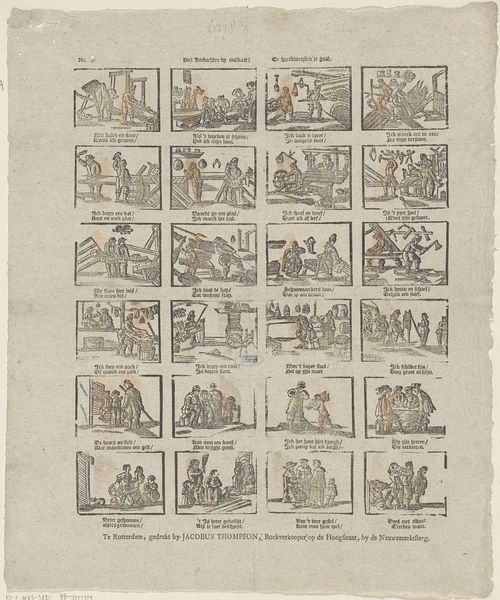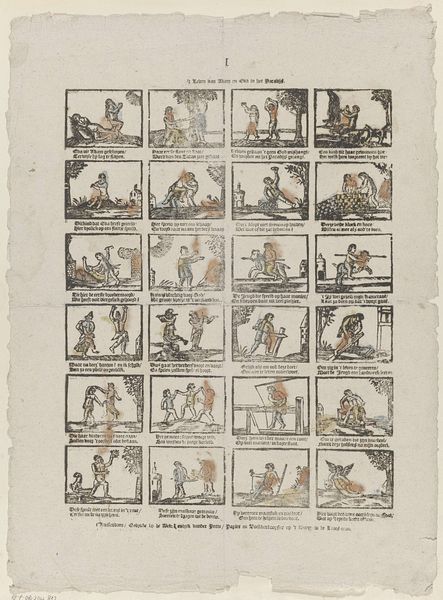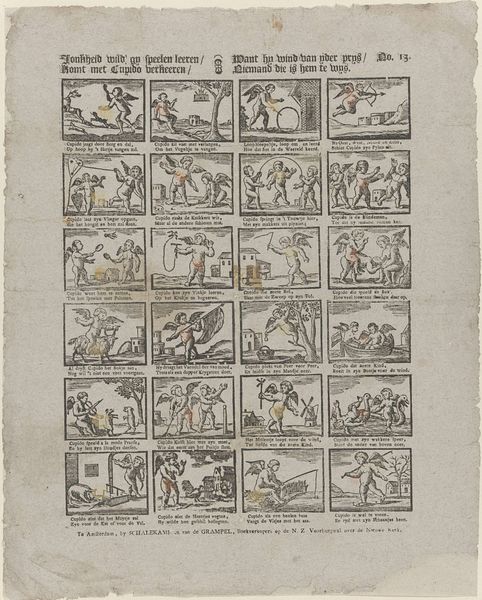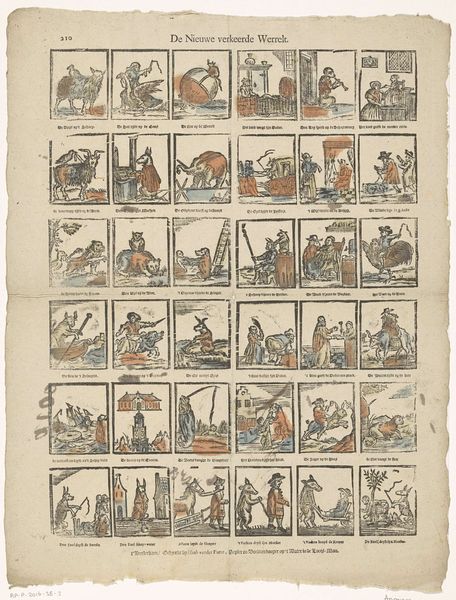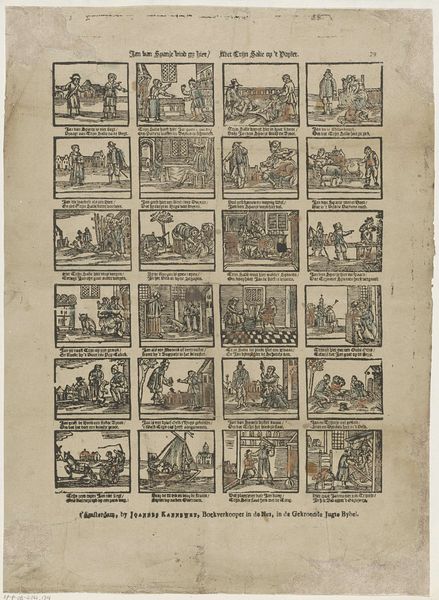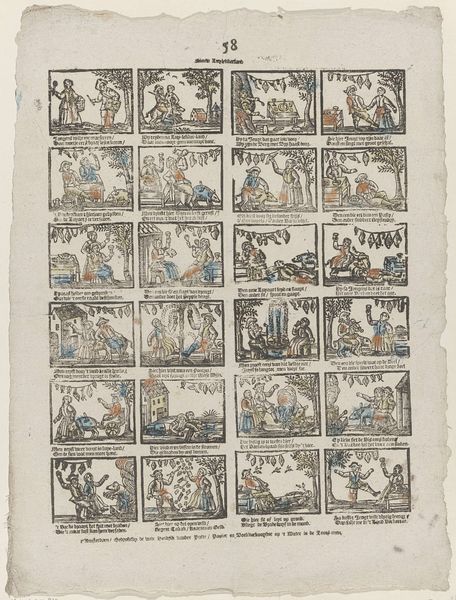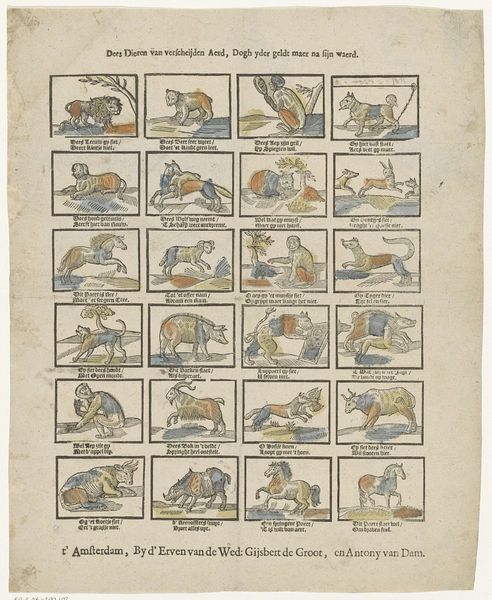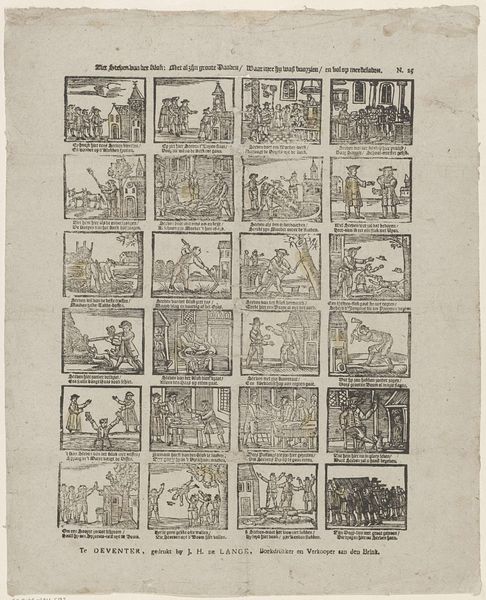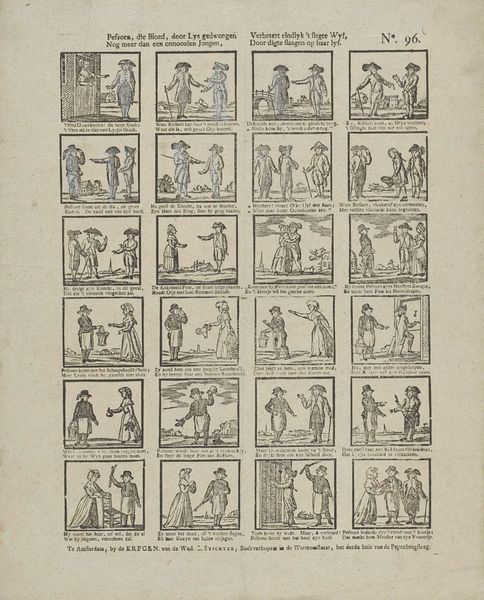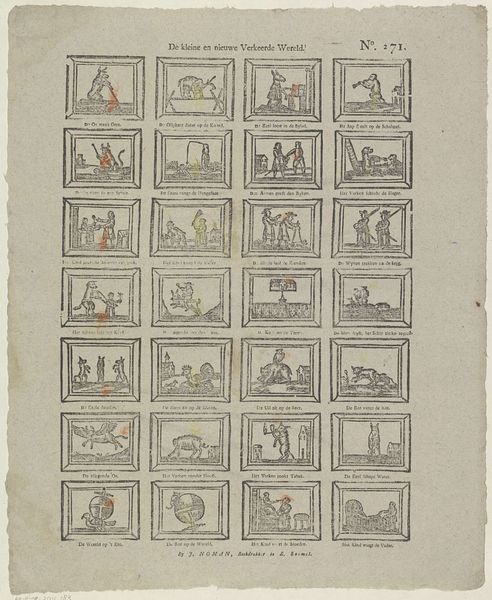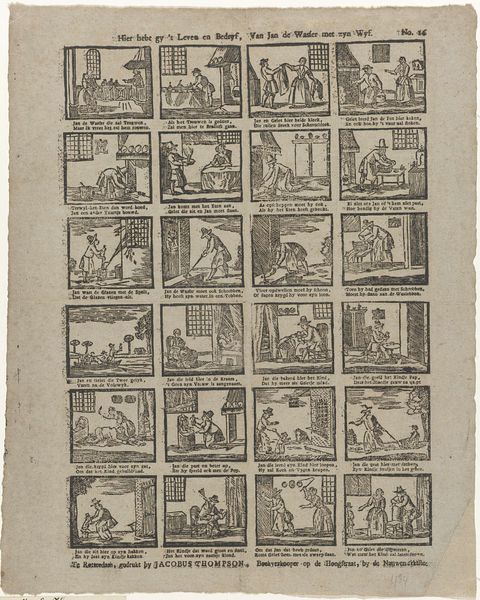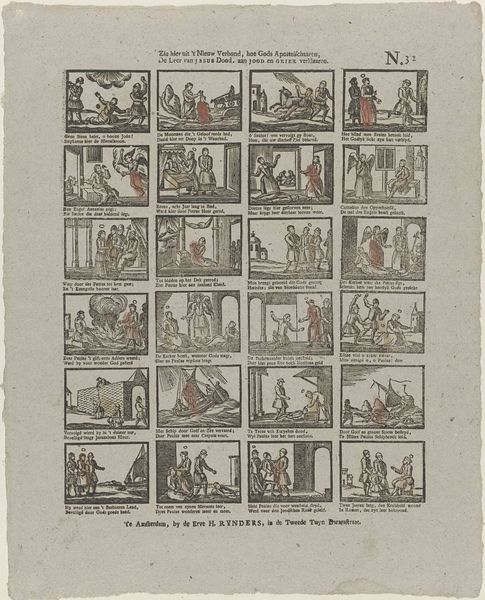
print, engraving
#
comic strip sketch
#
aged paper
# print
#
old engraving style
#
sketch book
#
bird
#
personal sketchbook
#
sketchwork
#
folk-art
#
pen-ink sketch
#
sketchbook drawing
#
genre-painting
#
storyboard and sketchbook work
#
sketchbook art
#
engraving
Dimensions: height 394 mm, width 320 mm
Copyright: Rijks Museum: Open Domain
Editor: This is "De jongens vermakelyke tyd-korting" from around 1805-1808 by Johannes Bouwer, held at the Rijksmuseum. It appears to be an engraving, almost like a page of little comic strips. It reminds me of early forms of sequential art. What jumps out at you when you look at this piece? Curator: What I find striking is how this artwork participates in a longer history of printmaking used for social commentary and popular education. Considering its production context—printed by a book printer—suggests a potential purpose beyond mere amusement. Editor: In what way? Curator: Prints like these served as accessible forms of visual communication, circulating ideas and moral lessons among a broad audience. Note how the series is laid out—could it be a commentary on children's behavior, intended for both their entertainment and instruction? Do the scenes depicted reflect the socio-economic realities of children in Amsterdam at the time? What could their recreational activities indicate about social hierarchies or changing notions of childhood? Editor: That's interesting. I hadn't considered the educational aspect so much. Looking closer, the boys do seem to be engaged in various, potentially mischievous activities... Curator: Exactly! These images served a public role. The politics of such imagery involve controlling public behaviour, specifically among youth. Consider also the power dynamic inherent in offering such "amusements." Is it genuinely for the children or for the adults regulating them? Editor: So, reading it purely as art, misses how deeply it's connected to social structure of the time. This print seems much richer now. Curator: Precisely! Understanding art in relation to social history allows us to unpack its intended function, even when it appears simple on the surface. Editor: I appreciate the new perspective. It's fascinating to see art as a form of social regulation.
Comments
No comments
Be the first to comment and join the conversation on the ultimate creative platform.
